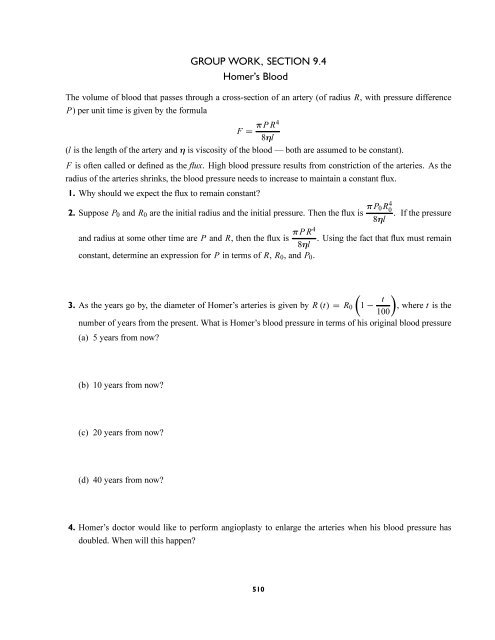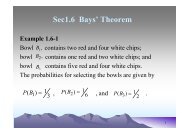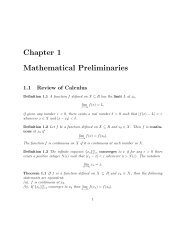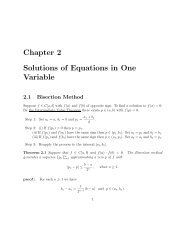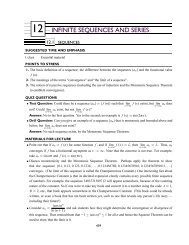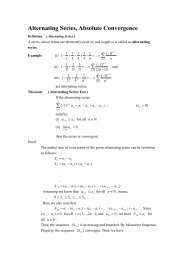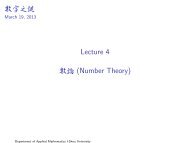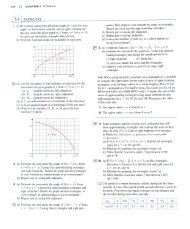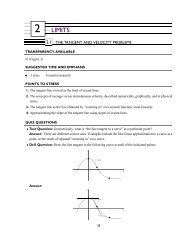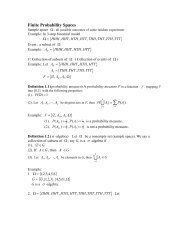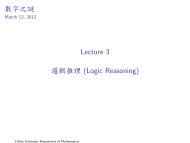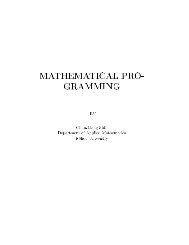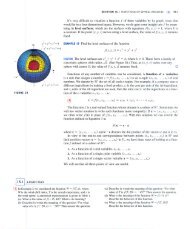9 FURTHER APPLICATIONS OF INTEGRATION
9 FURTHER APPLICATIONS OF INTEGRATION
9 FURTHER APPLICATIONS OF INTEGRATION
You also want an ePaper? Increase the reach of your titles
YUMPU automatically turns print PDFs into web optimized ePapers that Google loves.
GROUP WORK, SECTION 9.4<br />
Homer’s Blood<br />
The volume of blood that passes through a cross-section of an artery (of radius R, with pressure difference<br />
P) per unit time is given by the formula<br />
F = πPR4<br />
8ηl<br />
(l is the length of the artery and η is viscosity of the blood — both are assumed to be constant).<br />
F is often called or defined as the flux. High blood pressure results from constriction of the arteries. As the<br />
radius of the arteries shrinks, the blood pressure needs to increase to maintain a constant flux.<br />
1. Why should we expect the flux to remain constant?<br />
2. Suppose P 0 and R 0 are the initial radius and the initial pressure. Then the flux is πP 0R0<br />
4 . If the pressure<br />
8ηl<br />
and radius at some other time are P and R, then the flux is πPR4 . Using the fact that flux must remain<br />
8ηl<br />
constant, determine an expression for P in terms of R, R 0 ,andP 0 .<br />
(<br />
3. As the years go by, the diameter of Homer’s arteries is given by R (t) = R 0 1 − t )<br />
,wheret is the<br />
100<br />
number of years from the present. What is Homer’s blood pressure in terms of his original blood pressure<br />
(a) 5 years from now?<br />
(b) 10 years from now?<br />
(c) 20 years from now?<br />
(d) 40 years from now?<br />
4. Homer’s doctor would like to perform angioplasty to enlarge the arteries when his blood pressure has<br />
doubled. When will this happen?<br />
510


